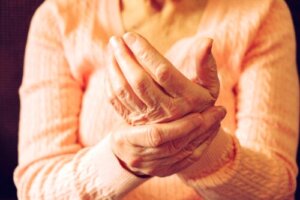World Day Against Pain: Transforming Knowledge into Practice


Written and verified by the doctor Mariel Mendoza
The World Day Against Pain is remembered on October 17 every year with the aim of improving the quality of life of those who suffer from it. The date was set on October 11, 2004 by the International Association for the Study of Pain, the European Pain Federation, and the World Health Organization (WHO).
Pain is more common in women and is highly prevalent in women of childbearing age. In its chronic form, it’s especially common at older ages.
This day was born out of the urgent need to find better methods of relief for the physical and emotional suffering that is a consequence of pain. That’s why the main goal of World Pain Day is to give greater visibility to those who want to find a way to ease the pain of people living with chronic illness.
Read more here: Pain On The Right Side of Your Chest: What Might Cause It?
Pain relief as a right
Different campaigns seek to raise awareness both in society as a whole and in different institutions and organizations, both public and private, of the need to use resources to promote research into pain treatment. This should reduce the gap between knowledge and its application in clinical practice.
This year, the International Association for Pain named 2022 as the “Global Year for Translating Pain Knowledge into Practice”. The aim is to increase knowledge, both clinical and scientific, in order to accumulate knowledge that will have an impact on pain management.
Because chronic pain has physical and emotional, individual and social repercussions, its relief has become an important task. Since 2000, long before the World Day Against Pain was celebrated, analgesia has been listed as a universal human right. It is even stipulated in the United Nations (UN) Charter of Human Rights.

Pain as a disease
Due to its high prevalence and repercussions, the World Health Organization classifies chronic pain as a disease. It’s the most frequent cause of consultation (up to half of the cases) in primary health care.
It includes the following types:
- Acute: a consequence of trauma, disease or surgery.
- Chronic: of multi-causal origin, affecting the quality of life of the sufferer and his or her relatives.
Chronic pain is present for more than 3 months and is related to gynecological pathologies (endometriosis or dysmenorrhea) and the locomotor system (rheumatoid arthritis, fibromyalgia, fractures or low back pain). It is also frequent in cases of neuropathies and cancer.
Chronic pain is mostly moderate to severe. It limits day-to-day activities.
In 2020, the International Pain Association defined it as an unpleasant sensory and emotional experience associated with, or similar to, the pain associated with actual or potential tissue injury.
Not only is it one of the causes that causes the most consultations in primary care, but the pain can be so intense that it doesn’t allow the sufferer to lead a normal life. Chronic pain interferes with daily activities, such as sleeping, participating in social activities, or working.
It’s also the main cause of work absenteeism and disability. Therefore, the socioeconomic repercussions make it a public health problem.
Read more here: What is Acute Low Back Pain?
Pain has a subjective component
Pain is an unpleasant sensation that has an emotional component managed by the nervous system. That’s why its subjective part is more difficult to control.
The scale of pain and pain tolerance is individual. Likewise, so is the impact on personal life as well as on family, work, social, and economic life. The psychological processing of the situation makes mental health intervention relevant in these patients.
Treatment shouldn’t only be pharmacological. Sometimes, it should include physical and psychological therapy.
The use of analgesics should be responsible

World Pain Day highlights the importance of proper pain management
Chronic pain often requires palliative care and family support. The approach should be individualized and the World Health Organization analgesic ladder is generally used.
Inadequate pain management is a common problem, as uncontrolled severe pain can have serious effects, with economic, occupational, and social losses. Disability and work absenteeism are situations that need to be resolved in public health.
The idea of promoting pain relief as a universal right is also to break the paradigms that prevent its effective control. The World Day Against Pain highlights the urgent need for an adequate and global response.
All cited sources were thoroughly reviewed by our team to ensure their quality, reliability, currency, and validity. The bibliography of this article was considered reliable and of academic or scientific accuracy.
- Brennan F, Cousins M. Rev. Soc. Esp. Dolor 2005;12. Disponible en https://scielo.isciii.es/pdf/dolor/v12n1/colaboracion.pdf.
- González C, Moreno M. Manejo del dolor crónico y limitación en las actividades de la vida diaria. Rev. Soc. Esp. Dolor 2007;6. Disponible en https://scielo.isciii.es/pdf/dolor/v14n6/original3.pdf.
- International Association For Study of Pain. Disponible en https://www.iasp-pain.org.
- Berrocoso Martínez, Alberto, Leonor de Arriba Muñoz, and Adriana Arcega Baraza. “Abordaje del dolor crónico no oncológico.” Revista Clínica de Medicina de Familia 11.3 (2018): 154-159.
- Margarit, César. “La nueva clasificación internacional de enfermedades (CIE-11) y el dolor crónico. Implicaciones prácticas.” Revista de la sociedad española del dolor 26.4 (2019): 209-210.
- Muñoz-Sanjosé, Ainoa, et al. “Intervenciones basadas en Mindfulness y compasión en dolor crónico.” Revista de Investigación y Educación en Ciencias de la Salud (RIECS) 4.S1 (2019): 112-122.
This text is provided for informational purposes only and does not replace consultation with a professional. If in doubt, consult your specialist.








